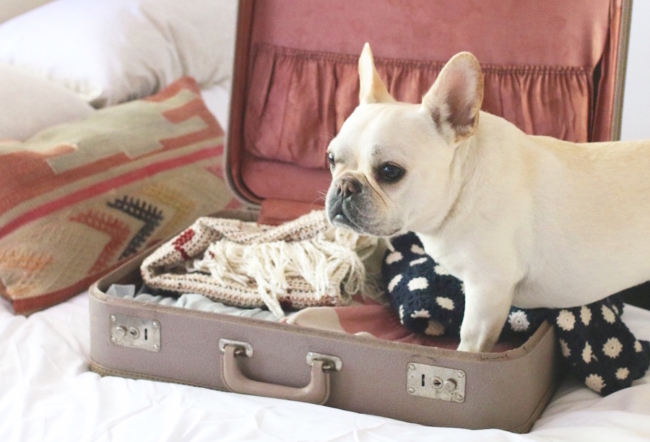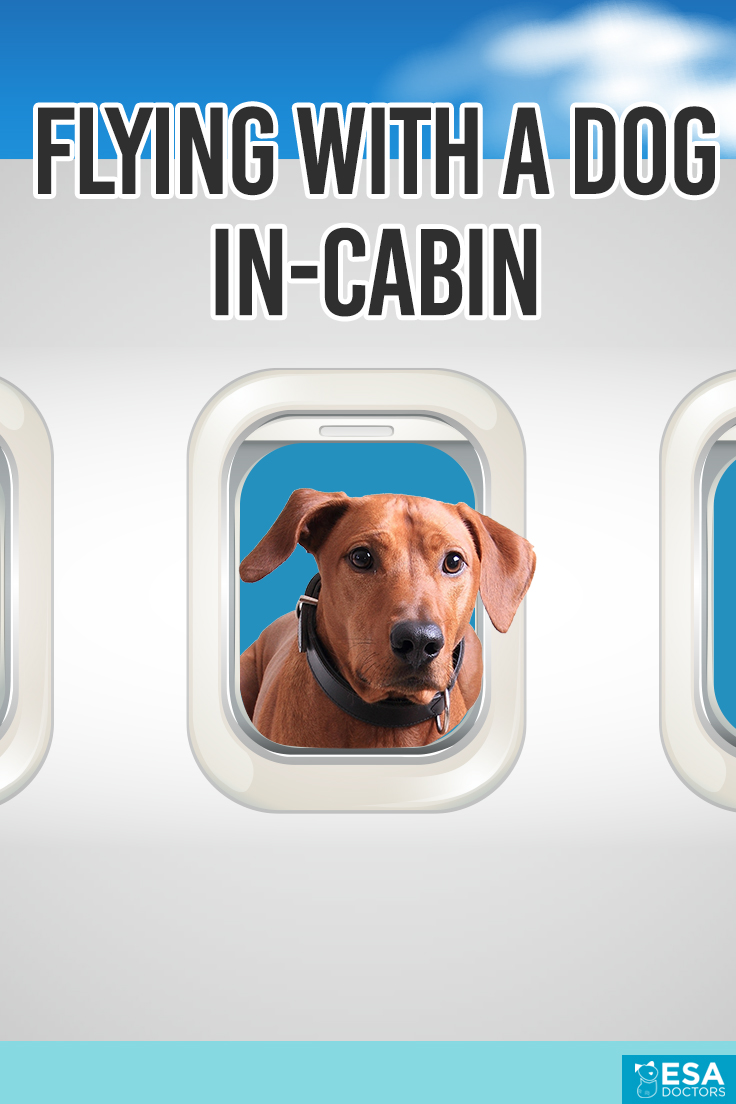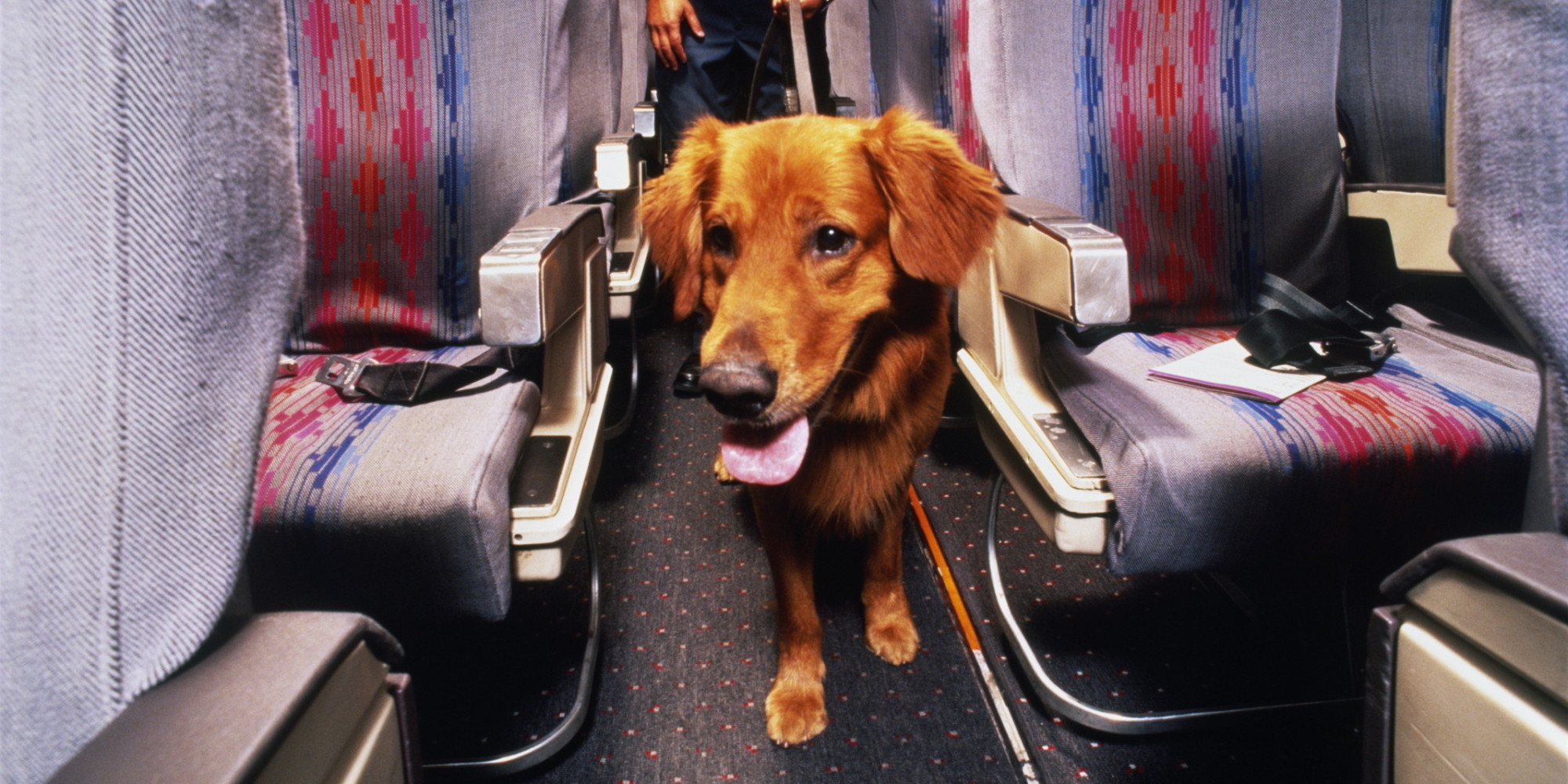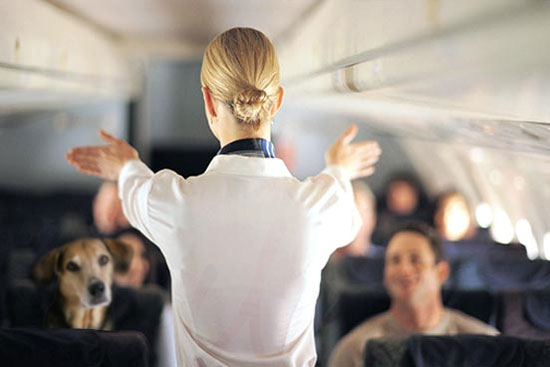Are you trying to figure out how to fly with your dog in the cabin of an airplane instead of cargo? It’s understandable as most dog owners refuse to put their dog in cargo. This article will help you understand your options as a dog owner. There are two basic ways to fly with a dog in the cabin: a normal pet or a psychiatric service dog (PSD).
If your dog is just a pet, you must first contact your airline and let them know you are flying with a dog. There are size and breed restrictions for in-cabin flights. You must also keep your dog in a travel bag or kennel for the duration of the flight. Essentially, flying with a dog that is a pet is only for smaller canines. There is also a significant cost to flying with a pet: the fee will typically be anywhere from $200 to $400 for a roundtrip flight.
In years past, passengers with emotional support animals (ESA) were allowed to fly in the cabin with their dog free of charge. Emotional support animals were also not subject to the same size and breed restrictions, so larger dogs could be with their owners in the cabin. In early 2021 however, the U.S. Department of Transportation effectively ended ESA programs on airlines with new regulations.
Psychiatric service dogs (PSDs), on the other hand, are still allowed to board the cabin of planes free of charge and exempt from size and weight restrictions. Psychiatric service dogs are different from emotional support dogs (although it is possible for an emotional support dog to be trained to become a psychiatric service dog). PSDs also have special documentation requirements that need to be fulfilled prior to boarding any flight.
In this article we’ll explain the different ways you can board the cabin of a plane with your canine companion.
If you are interested in a Psychiatric Service Dog Letter, we are happy to connect you with a licensed healthcare provider so they may assist you.
Steps to Flying with a Psychiatric Service Dog
- Understand whether you qualify for a PSD.
To have a psychiatric service dog legally recognized for bringing your dog to the airport and on flights as a service animal, you have to meet certain qualifications. The first criteria are that you must have a psychiatric disability, which means a mental or emotional health issue, psychiatric condition, or learning disability that “substantially limits one or more major life activities.” This is a similar standard applicable to qualifying for an emotional support animal.
If you need documentation that helps you determine whether your health condition meets the Americans with Disabilities Act (ADA) and Air Carrier Access Act (ACAA) criteria for a psychiatric disability, you can obtain a PSD letter from a licensed mental health professional. ESA Doctors works with licensed professionals who work remotely and can issue a signed PSD letter to you if you qualify after an evaluation. - Make sure your PSD is FULLY task trained.
For your dog to be considered a PSD, it is not only enough for the handler to meet the disability requirements of the ADA and ACAA. The dog must also be individually trained to perform tasks relating to the handler’s disability. This is the biggest difference between an ESA and a psychiatric service dog.
A dog is not considered a PSD until it has been fully trained to perform its task. There are hundreds of tasks PSDs are called on to perform, including using pressure/pawing to comfort during times of emotional distress, reminding their handlers to take medications or engage in activities, providing buffering against crowds, or interrupting dissociative spells or panic attacks.
A PSD must also be fully trained and behave in diverse public settings, hectic environments with lots of distractions. An airport or airline can reject your psychiatric service dog if it is misbehaving in public. - Complete and submit DOT Forms to the airline ahead of time.
As a result of the DOT’s new regulations, passengers must submit a special form (the DOT’s Service Animal Air Transportation Form) to the airline ahead of time when traveling with a psychiatric service dog. You should check with your airline to see how they accept the form; some will have a special online link set up where you can submit the form electronically.
Most airlines require the form to be sent in at least 48 hours before your flight. If you book your flight within 48 hours, you can generally submit the form at the gate before you board. The DOT Form requires you to self-certify that you have a fully trained service dog that performs a task relating to your disability. The form also requires the name of the dog’s trainer (which can be the handler or owner) and veterinarian (but the veterinarian does not need to sign). - Understand the airline’s rules for PSDs.
It’s important to understand what airlines expect of psychiatric service dogs. A PSD must be well-behaved at all times and can be kicked off a flight if it is exhibiting behaviors such as growling, lunging, or relieving itself in inappropriate areas. PSDs are expected to be under the handler’s control at all times and may require a tether or leash.
- Be prepared for inquiries about your PSD at the airport.
In addition to the DOT form, airline staff can confirm you are traveling with a PSD by asking two questions:
1) Is the dog a service dog required because of a disability?
2) What work or task has the service dog been trained to perform?
If an airline staff member asks you these questions, you do not have to fear disclosing any details about your condition because that is protected information. The DOT’s regulations also prohibit airline staff from demanding that a passenger have its PSD demonstrate its task.
Know if you qualify for a Psychiatric Service Dog. Order your PSD letter today.
Flying in the Cabin with Dogs that are Pets
If your dog does not qualify as a psychiatric service dog, it may still be able to fly as a normal pet. Most airlines charge a fee ranging from $100 to $200 each way per pet. Your dog must also be able to fit in a small carrier that can be placed under the seat in front of you, so in essence, only smaller dogs are allowed to fly in the cabin.
Each airline has their own specific rules regarding pets on flights. For more information on specific airlines, please visit the links below:
- Delta Airlines
- United Airlines
- Southwest Airlines
- Alaska Airlines
- Spirit Airlines
- American Airlines
- JetBlue
Tips for Flying with a Dog In-Cabin

Being at the airport and flying can be a stressful experience for a dog. Here are some tips on making the process as easy and comfortable as possible, and avoiding unnecessary stress for both you and your dog.
1. Notify the Airline
When booking your seat, make sure to let your airline know that you’ll be traveling with a PSD or pet. Ask if there are any specific airline requirements and prepare as much as you can. If you are flying with a PSD, you will need to submit your DOT form in advance. If you’re flying with a pet, there are limited spaces available for pets on flights, so it’s helpful to let the airline know as far ahead of time as possible.
2. Don’t Feed Your Dog

Depending on the time of your flight, plan your dog’s feeding schedule so that your dog doesn’t overeat at least a few hours before the flight. If it’s your first time traveling together, you can’t be sure if your dog will have motion sickness, so apply measures of precaution. In addition, avoid any new foods or treats the day before the flight as well. Stick to what you know your dog has no trouble digesting comfortably.
3. Go for a Long Walk or Run

It’s best not to have a hyperactive dog on a flight. So before heading to the airport, have a long walk and let your dog run and work off any excess energy. This can also help the dog be more relaxed and less anxious during the flight. This also allows your dog to relieve itself before a long flight.
4. Don’t Forget…
Bring a blanket for your dog, prepare a few pee pads and bring some clean-up items just in case. Bringing your dog’s favorite toy can also help it relax. If you are traveling with your dog as a regular pet, remember that the pet carrier must meet your airline’s specific size requirements.
Remember that your dog may be going through a unique experience that may not be very pleasant — and all that to help you. Try to return the favor, and don’t forget to say “thank you” with a nice treat once you’ve landed.
Final Thoughts

If you’re not sure whether you have a qualifying condition for a PSD or you’re a current PSD owner that needs backup documentation, ESA Doctors can help. A welcoming licensed professional will help assess whether you meet the ADA and ACAA criteria for owning a psychiatric service dog.
The process is convenient, simple and confidential, and can be completed from the comfort of your home.










Leave a Comment